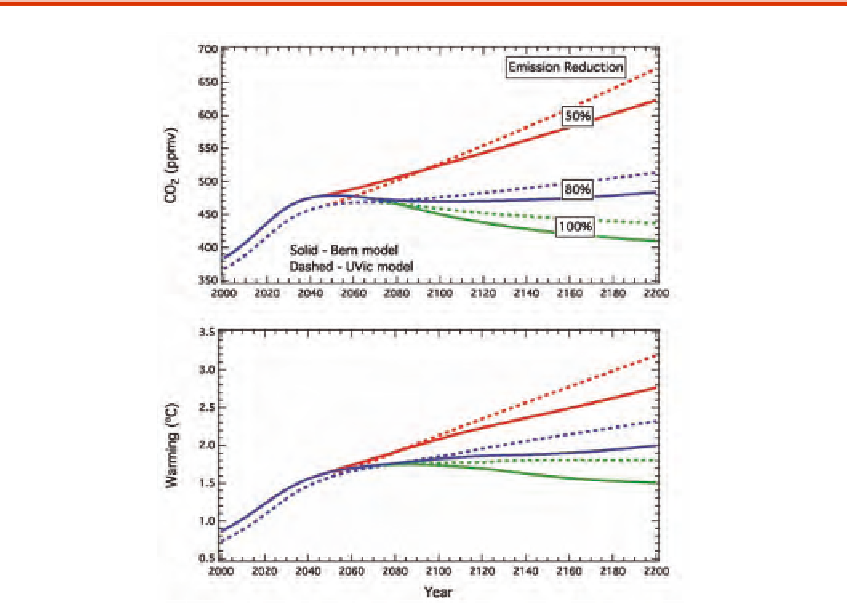Environmental Engineering Reference
In-Depth Information
chosen target stabilization concentration? Studies over the past five years
of so using many different carbon cycle models have improved our under-
standing of requirements for carbon dioxide stabilization. This is because of
more detailed treatments of carbon-climate feedbacks, including the ways
in which warming decreases the efficiency of carbon sinks as compared to
earlier work (e.g., Jones et al., 2006; Matthews, 2006). Figure 2.2 shows
an example of stabilization for two different Earth Models of Intermediate
Complexity (EMICs), the University of Victoria (UVIC) model and the Bern
model (see Methods section for descriptions of these two models; see also
Plattner et al., 2008, and references therein for a model intercomparison
study). In this example test case, carbon dioxide emissions increase at cur-
rent growth rates of about 2% per year to a maximum of about 12 GtC per
FIGURE 2.2 Illustrative calculations showing CO
2
concentrations and related warming in two EMICS (the
Bern model and the University of Victoria model, see Methods) for a test case in which emissions first in-
crease, followed by a decrease in emission rate of 3% per year to a value 50%, 80%, or 100% below the peak.
The test case with 100% emission reduction has 1 trillion tonnes of total emission and is also discussed in
Section 3.4.

